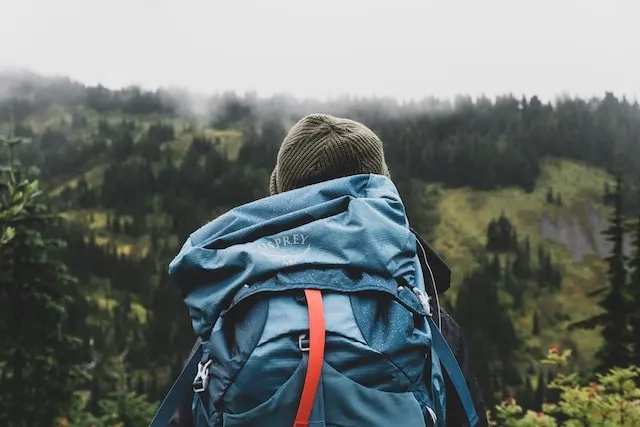Embark on a transformative journey as we delve into the world of “Hiking Up a Mountain Mean.” Discover the physical and mental benefits, overcome challenges, and explore the joy of summiting. Whether you’re a seasoned hiker or a beginner, this guide provides insights and tips to make your mountain trek a memorable and enriching experience.
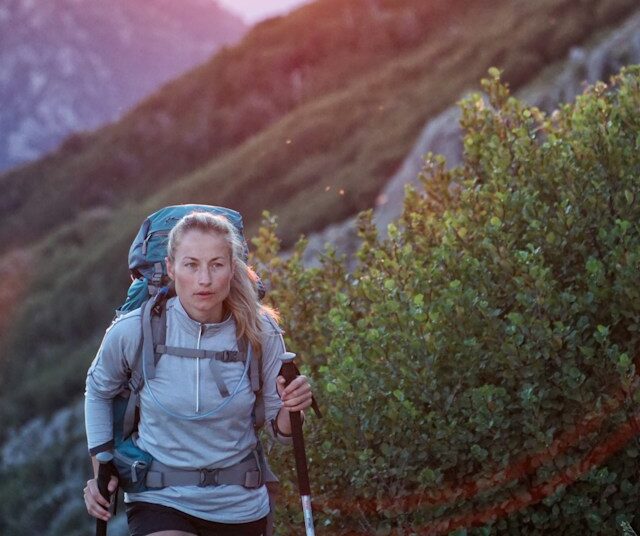
What does it mean when you say Hiking Up a Mountain Mean?
Hiking up a mountain refers to the activity of ascending a mountain on foot, typically along designated trails or paths. It involves traversing varying terrains, such as rocky slopes, forests, and alpine meadows, to reach the summit or higher elevations.
Hiking up a mountain is a recreational outdoor activity that offers both physical exercise and an opportunity to connect with nature. The term “hiking up” emphasizes the upward direction of the trek, indicating an ascent towards the peak or summit of the mountain.
What is the main difference between Hiking and Climbing?
These both are outdoor activities, but these activities involve distinct differences in terms of intensity, technical skills, and equipment.
When I go hiking, it’s more of a recreational activity where I traverse trails and enjoy the natural surroundings. Hiking typically involves walking on established paths, and the terrain may vary from easy to challenging.
It’s an excellent way to appreciate nature, get some exercise, and enjoy scenic views. Hiking generally doesn’t require specialized equipment beyond comfortable footwear, appropriate clothing, and maybe a backpack with essentials like water and snacks.
On the other hand, mountain climbing, or mountaineering, is a more advanced and technical pursuit. Climbing a mountain often involves scaling steep or rocky surfaces, navigating through challenging terrain, and dealing with higher altitudes.
This activity demands specialized skills such as rock climbing, ice climbing, and the use of technical gear like ropes, harnesses, and crampons. Climbing can range from moderately technical ascents to highly challenging and dangerous expeditions, depending on the mountain’s difficulty level.
In essence, hiking is a more accessible and less technical activity suitable for a broader range of enthusiasts, while climbing requires specific skills, equipment, and often a higher level of physical fitness. Both offer unique experiences and opportunities to connect with nature, but the choice between hiking and climbing depends on individual preferences and skill levels.
Is Hiking Good for Health?
Absolutely! Hiking is not only an enjoyable outdoor activity but also offers numerous health benefits. When I hit the trails, I’m not just treating myself to breathtaking views and fresh air; I’m also doing wonders for my overall well-being.

Hiking is an excellent cardiovascular exercise. It gets my heart pumping, improving blood circulation and enhancing cardiovascular health. The varying terrain and inclines during a hike engage different muscle groups, contributing to a full-body workout. Over time, this helps in building and toning muscles, especially in the legs, buttocks, and core.
Hiking is a fantastic way to manage and reduce stress. Being surrounded by nature, breathing in the fresh air, and disconnecting from the daily grind has a calming effect on the mind. It’s like a natural therapy session that helps to clear my thoughts and improve my mental well-being.
I also appreciate the positive impact hiking has on my respiratory health. The combination of physical activity and fresh, outdoor air contributes to better lung capacity and function. It’s a great way to strengthen the respiratory system.
So, in a nutshell, hiking isn’t just a stroll in the woods; it’s a holistic activity that promotes physical fitness, mental well-being, and an overall healthier lifestyle.
For Whom It is the Best exercise?
For beginners or those looking for a low-impact exercise, hiking provides a gentle introduction to physical activity. The varied terrain and trail options allow individuals to choose paths that match their fitness levels. It’s a versatile activity that can be adapted to different intensities, making it suitable for people of varying fitness backgrounds.
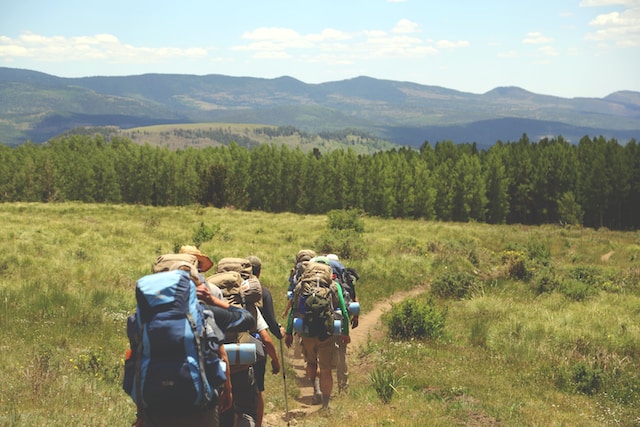
For those aiming to improve cardiovascular health, hiking offers an effective aerobic workout. The uphill climbs and uneven surfaces engage the heart and lungs, promoting better circulation and respiratory function. This cardiovascular aspect of hiking benefits people looking to enhance their overall heart health.
Hiking is also an excellent choice for individuals seeking a full-body workout. The uneven terrain engages multiple muscle groups, including the legs, core, and even the arms when using trekking poles. This makes it a great option for those wanting to build and tone muscle while enjoying the outdoors.
Individuals looking to manage stress and improve mental well-being, hiking provides a serene and natural setting. Being in nature, surrounded by trees and fresh air, has proven therapeutic benefits, promoting relaxation and reducing stress levels.
Hiking is a good exercise for virtually everyone. Whether you’re a beginner or an experienced fitness enthusiast, whether you’re looking to improve cardiovascular health, build muscle, or simply enjoy the mental benefits of being in nature, hiking offers a versatile and enjoyable way to stay active and healthy.
Who should not go for hiking?
If you are a woman and planning to go on solo hiking then must read: Is it safe to go hiking alone as a woman? Guide for 2024
While hiking is a generally inclusive and accessible activity, there are certain individuals who should approach it with caution or consult with a healthcare professional before embarking on more challenging trails.
It’s crucial for individuals to assess their own health, fitness level, and experience before embarking on a hiking trip. Consulting with a healthcare professional and starting with trails that match one’s abilities can help ensure a safe and enjoyable hiking experience. Here are some considerations for individuals who might need to be cautious about hiking:
Medical Conditions
People with pre-existing medical conditions, such as heart problems, respiratory issues, or joint problems, should consult with their healthcare provider before starting a hiking routine. Certain health conditions may require careful consideration of the level of physical activity involved in hiking.
Severe Physical Limitations:
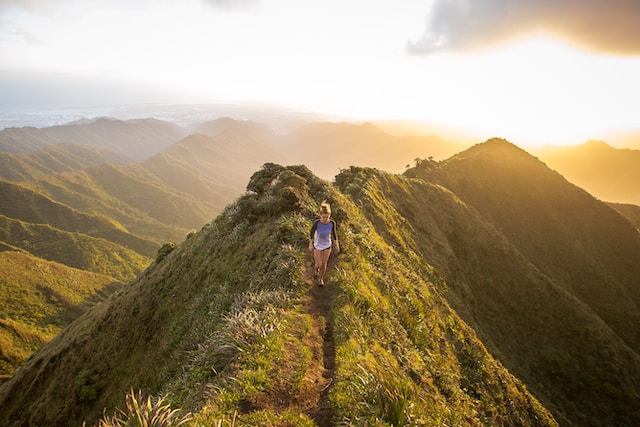
Individuals with severe physical limitations that affect mobility or balance should carefully assess their capabilities and choose trails that match their abilities. Some trails may be too challenging for those with significant physical limitations.
Altitude Sensitivity:
People sensitive to high altitudes should be cautious when hiking at elevations where altitude-related issues might arise. It’s crucial to acclimate slowly and be aware of symptoms of altitude sickness.
Inexperienced Hikers in Challenging Environments:
Those new to hiking, especially in more rugged or remote environments, should start with easier trails to build their skills and fitness gradually. Inexperienced hikers may find certain challenging terrains too demanding without proper preparation.
Young Children without Proper Supervision:
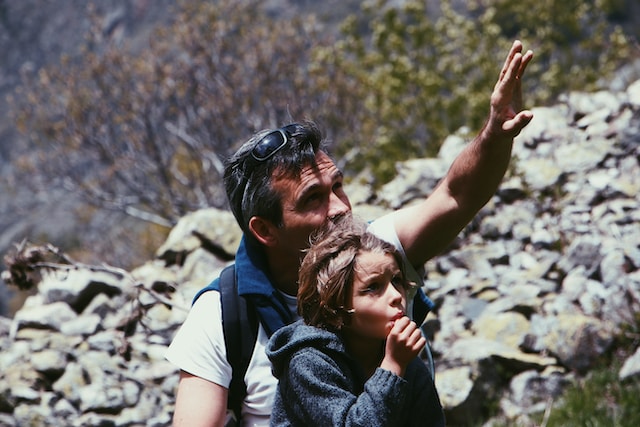
While hiking can be a family-friendly activity, young children should be supervised, and trails should be chosen with their abilities in mind. It’s important to consider the length and difficulty of the hike to ensure a positive experience for everyone.
Extreme Weather Conditions:
Hiking in extreme weather conditions, such as severe heat or cold, may not be suitable for everyone. Individuals with certain medical conditions may be more vulnerable to the effects of extreme temperatures.
Pregnant Women
Pregnant women should be cautious, especially during more challenging hikes. It’s essential to consult with a healthcare provider to determine the suitability of hiking based on the individual’s health and the stage of pregnancy.
Main types of Climb
There are several main types of climbing, each with its own set of techniques, equipment, and challenges. Here are the main types of climbing:
Rock Climbing
Rock climbing involves ascending natural rock formations using a combination of physical strength, technique, and specialized equipment. Climbers use their hands and feet to navigate rock surfaces, and safety is ensured through the use of ropes, harnesses, and anchors.
Ice Climbing
Ice climbing is the ascent of ice-covered rock faces, frozen waterfalls, or ice-covered cliffs using specialized equipment such as ice axes and crampons. Climbers often use ropes and protection similar to rock climbing, adapting their techniques to the unique challenges posed by icy surfaces.
Alpine Climbing
Alpine climbing takes place in mountainous environments, often involving a combination of rock, ice, and mixed terrain. It requires a broad range of skills, including navigation, technical climbing, and an understanding of changing weather conditions. Alpine climbers may encounter challenges such as glacier crossings and high altitudes.
Traditional Climbing (Trad Climbing)

Trad climbing involves placing and removing one’s protective gear, known as “traditional” or “trad” gear, into cracks and other features in the rock. Climbers ascend a route, placing their protection as they go, and remove it when descending. Trad climbing requires a high level of technical skill and knowledge of placing reliable protection.
Sport Climbing:
Sport climbing takes place on pre-bolted routes where fixed anchors, or bolts, are already in place for protection. Climbers use quickdraws to attach their ropes to these bolts as they ascend. Sport climbing is known for its focus on physical difficulty, with routes often featuring challenging sequences of moves.
Bouldering:
Bouldering is a form of climbing performed on short, challenging routes (boulders) without the use of ropes or harnesses. Climbers rely on crash pads for protection in case of falls. Bouldering emphasizes strength, technique, and problem-solving skills, and routes (problems) are typically short but intense.
Big Wall Climbing
Big wall climbing involves ascending large, multi-pitch routes that can take multiple days to complete. Climbers often sleep on portaledges (hanging tents) on the face of the wall. This type of climbing demands not only technical climbing skills but also logistical planning and endurance.
Free Soloing
Free soloing is the most extreme form of climbing, involving ascending without the use of ropes or any protective equipment. Climbers rely solely on their skills and physical abilities. Due to its high-risk nature, free soloing is undertaken by very experienced and skilled climbers.
Each type of climbing requires specific skills, equipment, and risk management strategies. Climbers often specialize in one or more types of climbing based on their preferences and expertise.
The main types of Hiking Up a Mountain
Hiking encompasses a variety of experiences, and the types of hiking can vary based on factors such as terrain, duration, and level of difficulty. Here are some main types of hiking:
Day Hiking:

Day hiking involves trekking on established trails and completing the journey within a single day. Hikers typically carry essentials like water, snacks, and a map, but overnight gear is not necessary.
Backpacking
Backpacking is a multi-day hiking adventure where individuals carry all necessary gear, including food and shelter, in a backpack. Backpackers often cover longer distances and may camp overnight on the trail.
Thru-Hiking
Description: Thru-hiking is an extended form of backpacking that involves completing an entire long-distance trail in one continuous journey. Examples include the Appalachian Trail, Pacific Crest Trail, and the Continental Divide Trail.
Ultralight Hiking
Description: Ultralight hiking is a style that focuses on reducing pack weight, often using minimalist gear and techniques. Ultralight hikers prioritize efficiency and may carry only essential items to minimize the load.
Hiking Tours and Guided Hikes
Description: Hiking tours and guided hikes are organized excursions led by experienced guides. These can range from day tours to multi-day adventures, providing participants with expert knowledge and support.
Trail Running
Description: Trail running involves covering hiking trails at a faster pace, incorporating running or jogging. Trail runners often seek more challenging and technical routes, combining the benefits of running with the enjoyment of nature.
Winter Hiking and Snowshoeing
Description: Winter hiking involves trekking on snow-covered trails, and snowshoeing uses specialized equipment to walk on snow without sinking. Both activities provide a unique perspective of landscapes transformed by winter.
Scrambling
Description: Scrambling is a form of hiking that includes hands-on climbing over rocky or steep terrain. It is less technical than rock climbing but more challenging than regular hiking, often requiring careful route-finding and basic climbing skills.
Themed or Geocaching Hikes
Description: Themed hikes may focus on specific interests like bird watching, photography, or historical exploration. Geocaching hikes involve using GPS coordinates to find hidden containers (geocaches) along the trail.
Peak Bagging
Description: Peak bagging enthusiasts aim to summit a specific set of peaks or mountains, often pursuing a list or challenge. It adds an element of achievement to hiking, encouraging exploration of different locations.
These types of hiking offer diverse experiences, catering to various preferences and fitness levels. Whether you prefer a leisurely day hike, an extended backpacking trip, or a challenging scramble, there’s a type of hiking adventure for everyone.
How to Hike a mountain
Certainly, let’s explore how to hike a mountain and discuss the general experience without using numbered headings.
Research and Choose a Suitable Trail:
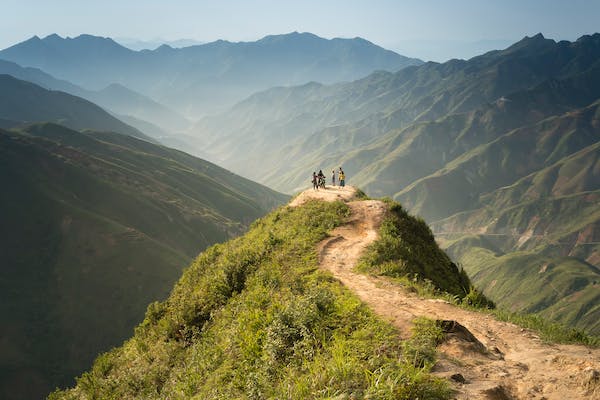
Before embarking on a mountain hike, it’s essential to research various trails. Consider factors such as difficulty, length, and elevation gain. Choosing a trail that aligns with your fitness level and experience is crucial for an enjoyable experience.
Check Weather Conditions:
Mountain weather can be unpredictable, so checking the forecast is vital. Dress appropriately in layers, considering potential temperature variations and the possibility of precipitation. Being prepared for changing weather conditions enhances your safety and comfort.
Pack Essentials:
Ensure you pack essential items for your mountain hike. Water, snacks, a map, a compass or GPS device, a first aid kit, and extra clothing are crucial. A well-packed backpack with the right gear contributes to a smoother and safer hiking experience.
Wear Proper Footwear:
Sturdy and comfortable hiking boots with good traction are a must. The uneven and rocky terrain of mountains demands proper footwear for stability and protection. Investing in quality hiking boots enhances your comfort and reduces the risk of injuries.
Start Early:
Commence your hike early in the day to allow sufficient time to complete the trail and to avoid potential afternoon weather changes. Starting early also provides more daylight, allowing you to savor the beauty of your surroundings.
Follow Trail Markers:
Stay on marked trails to avoid getting lost. Many mountain trails have markers, cairns, or signs indicating the path. Pay close attention to these markers, especially in areas where the trail might be less defined. Staying on the designated path is key for a safe and enjoyable hike.
Stay Hydrated and Energized:

Mountain hiking is physically demanding, so staying hydrated is crucial. Carry water and energy-rich snacks to maintain your energy levels throughout the hike. Taking breaks to hydrate and refuel contributes to a more enjoyable experience.
Leave No Trace:
Respect the environment by adhering to the principles of Leave No Trace. Pack out all trash, stay on designated trails, and minimize your impact on the natural surroundings. Preserving the beauty of the mountain landscape ensures a positive experience for future hikers.
Be Mindful of Altitude:
If hiking at higher altitudes, be aware of the potential effects of altitude sickness. Acclimate gradually, stay hydrated, and listen to your body. Pay attention to any symptoms, such as dizziness or shortness of breath, and take necessary precautions.
Enjoy the Journey:
Lastly, take breaks to appreciate the scenery and enjoy the journey. Mountains offer breathtaking views, and the experience is not solely about reaching the summit but also about the adventure along the way. Embrace the unique beauty each mountain trail presents and relish the sense of accomplishment as you explore nature’s wonders.
Essentials for hiking:
Certainly, here are the essentials of hiking, along with brief explanations:
Appropriate Footwear:
Sturdy and comfortable hiking boots with good traction are essential. Proper footwear provides stability, protects your feet, and ensures comfort on varied terrains.
Weather-Appropriate Clothing:
Dress in layers to adapt to changing weather conditions. Bring a waterproof jacket, hat, and gloves. Weather-appropriate clothing keeps you comfortable and protected.
Navigation Tools:

Carry a map, compass, or GPS device. These tools help you navigate and stay on the trail, minimizing the risk of getting lost.
Hydration:
Bring an adequate supply of water to stay hydrated during the hike. Dehydration can lead to fatigue and discomfort, affecting your overall hiking experience.
Nutritious Snacks:
Pack energy-rich snacks such as trail mix, granola bars, or fruits. These snacks provide a quick energy boost and help maintain stamina during the hike.
Backpack:
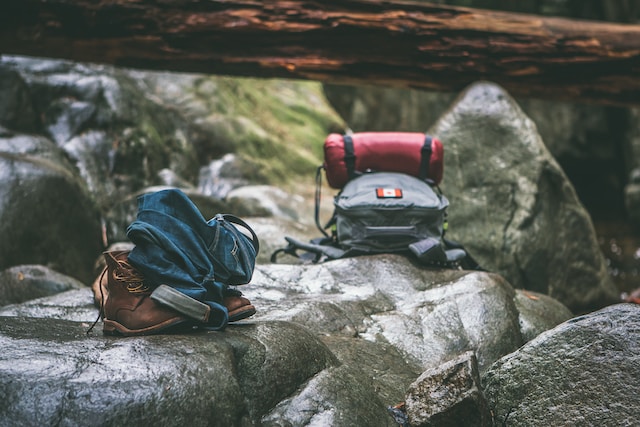
A well-fitted and comfortable backpack is crucial. It holds your essentials and evenly distributes the weight, preventing discomfort or strain.
First Aid Kit:
A basic first aid kit should include bandages, antiseptic wipes, pain relievers, blister treatment, and any personal medications. It’s essential for addressing minor injuries on the trail.
Sun Protection:
Use sunscreen, sunglasses, and a hat to protect yourself from the sun’s harmful rays. Sun protection is vital, especially at higher elevations.
Multi-Tool or Knife:
A multi-tool or knife can be versatile for various tasks, from cutting to repairing gear. It’s a handy tool that can assist in unexpected situations.
Emergency Shelter:
Carry a lightweight emergency shelter such as a space blanket or bivy. It provides protection in case of unexpected weather changes or emergencies.
Headlamp/Flashlight:
Essential for low-light conditions or unexpected delays, a headlamp or flashlight ensures visibility and safety during dawn, dusk, or night hikes.
Whistle:
A whistle is a simple but effective signaling device. It can be crucial in emergencies for alerting others to your location.
Fire Starter:

Carry waterproof matches, a lighter, or a fire starter. It serves as a survival tool in case of emergencies and can provide warmth in cold conditions.
Personal Identification and Emergency Contact Information:
Carry identification and a note with emergency contact information. It aids rescuers in case of an accident or emergency.
Trash Bag:
Practice Leave No Trace principles by carrying a small trash bag. Pack out all waste to minimize your environmental impact. These essentials ensure a safe and enjoyable hiking experience, covering basic needs, safety, and preparedness for various situations on the trail.
Benefits of Hiking up a mountain
Picture this: crisp mountain air, panoramic views that take your breath away, and the rhythmic crunch of gravel beneath your boots. Mountain hiking isn’t just a trek; it’s an exhilarating journey that weaves a tapestry of physical, mental, and emotional benefits.
Revitalize Your Body, Mind, and Spirit
Escape the humdrum of daily life as you embark on a full-body workout. The undulating trails, with their inclines and descents, engage muscles you never knew you had. Your heart pumps, lungs expand, and as you conquer each summit, a sense of achievement revitalizes your entire being.
Nature’s Therapeutic Touch
The mountains aren’t just silent spectators; they’re healers. The serene surroundings act as a balm for a stressed mind. Feel the tension melt away as you immerse yourself in the soothing embrace of nature, reducing stress and promoting mental well-being.
A Symphony of Sights and Sounds
Disconnect from the digital din and immerse yourself in the symphony of nature. The rustle of leaves, the chirping of birds, and the distant murmur of a stream create a sensory feast. This sensory immersion not only rejuvenates but also enhances your appreciation for the world around you.
Sleep, Glorious Sleep
Bid farewell to restless nights. The physical exertion of hiking, coupled with the tranquility of the mountains, ushers in a profound sense of peace. Say hello to improved sleep patterns and wake up feeling refreshed and ready to seize the day.
Share the Trail, Share the Joy
Hiking isn’t just a solo endeavor. Invite friends or family to join you on the trail, fostering social bonds. Shared laughter, the triumph of reaching a summit together, and the camaraderie developed on the trail create lasting memories.
Unleash Your Creative Spirit
Nature has a way of inspiring creativity. As your boots tread the earth, let your mind wander. The vastness of the landscape and the challenges of the trail stimulate innovative thinking, making mountain hiking a muse for your creative spirit.
Heart Health, One Step at a Time
Your heart will thank you. The cardiovascular benefits of hiking contribute to a healthier heart and improved circulation. Reduce the risk of heart disease and enjoy a natural, heart-pumping workout surrounded by breathtaking vistas.
Gentle on Joints, Tough on Calories
Unlike high-impact sports, hiking is gentle on joints. It’s an accessible exercise for all ages and fitness levels. Burn calories, boost metabolism, and manage weight while savoring the beauty of the great outdoors.
Environmental Awakening

Become a steward of the environment. Hiking fosters an awareness of nature’s fragility, encouraging a commitment to sustainable practices. The more we connect with the outdoors, the more determined we become to protect it.
A Journey, Not Just a Destination
Mountain hiking is more than reaching a summit; it’s a transformative journey. Embrace the adventure, relish the challenges, and let the mountains sculpt a healthier, happier version of yourself. In every step, discover the magic that mountain hiking brings to your life—a holistic embrace of nature’s wonders and a celebration of your own vitality.
life lessons you will learn from Hiking up a mountain
Hiking isn’t just about conquering peaks; it’s about navigating the twists and turns of life. Here are ten invaluable life lessons I’ve gleaned from the trail, each underscored by real-life examples.
1. The Power of Perseverance
On a steep incline, breaths heavy and muscles aching, I learned that the summit isn’t just a destination; it’s a reward for persistence. Life echoed this wisdom when I faced professional challenges. Perseverance was my compass, guiding me to triumph.
2. Embrace the Unknown
Venturing into unexplored trails mirrors life’s uncertainties. When I faced a major career change, embracing the unknown became a mantra. The unfamiliar path led to newfound skills and opportunities I never imagined.
3. Journey at Your Own Pace
While trekking, I discovered the joy of setting my pace. This translated into life as I navigated personal growth. Each milestone—be it career advancements or personal achievements—was uniquely mine, not to be compared but savored.
4. The Joy of Simple Pleasures
Amidst towering peaks, I found joy in nature’s simplicity—a blooming flower, a gentle breeze. Translating this to life, I started appreciating everyday moments, finding profound happiness in the simplicity of shared laughter or a quiet sunset.
5. Preparedness is Key
A sudden downpour or a misplaced map taught me the importance of preparedness on the trail. In real life, unexpected challenges underscored the need for adaptability and a well-prepared mindset to weather storms.
6. Leave No Trace
Trekking etiquette, leaving no trace, extended to life as I recognized the impact of my actions on others. I embraced responsibility and learned to navigate personal relationships with grace, leaving positive imprints.
7. Trust the Journey, Trust Yourself
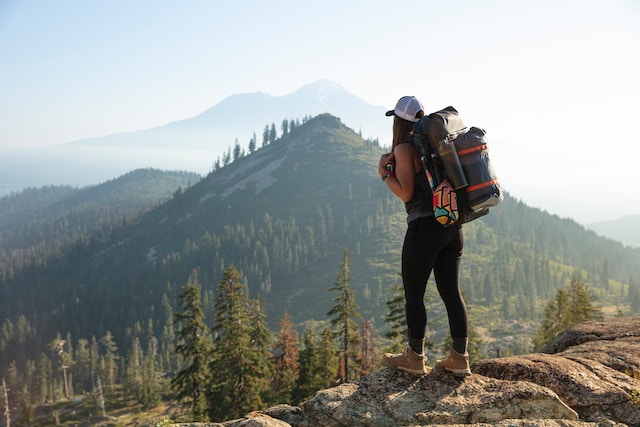
Life’s journey, like a winding trail, demanded trust. Trusting the process and my instincts became crucial. Much like summiting a peak, my personal victories followed moments of unwavering self-belief.
8. Connection with the Present
Hiking’s demand for mindfulness—navigating rocky terrains and relishing each step—translated into a richer life experience. Embracing the present moment, I found solace and joy in the midst of life’s chaos.
9. Acceptance of Change
Witnessing nature’s seasonal shifts, I understood the inevitability of change. Life’s transitions—job changes, personal growth—became opportunities for renewal, much like the changing leaves in the fall.
10. Celebrate Every Summit
Standing atop a peak, I learned the importance of celebrating achievements. Applying this to life, I began acknowledging both small and significant victories, fostering a positive mindset and a thirst for new adventures.
Life, much like a hiking trail, is a continuous journey of discovery and growth. Through every ascent and descent, I’ve found profound lessons that have shaped not only my approach to hiking but also my perspective on navigating the trail of life.
Conclusion:
Hiking up a mountain is a transformative experience that encompasses physical challenges, mental rejuvenation, and a deep connection with nature. The journey provides a sense of accomplishment, opportunities for personal growth, and a chance to appreciate the beauty of the world from new heights.
As you lace up your hiking boots and hit the trails, remember the importance of safety, environmental responsibility, and the joy of sharing the adventure with fellow hikers. Whether you’re a seasoned mountaineer or a novice explorer, the rewards of hiking up a mountain are boundless.
If you are interested in solo hiking then you must read my article: 25 Essential Solo Backpacking Gear for Beginners 2024.
FAQs: Hiking Up a Mountain
Is mountain hiking suitable for beginners?
Absolutely! There are trails of varying difficulty levels, and beginners can start with more accessible routes before progressing to more challenging ones.
What should I pack for a mountain hike?
Essential items include proper footwear, weather-appropriate clothing, a map and compass, sufficient water and snacks, a first aid kit, and emergency supplies.
How do I acclimatize to high altitudes?
Gradual ascent is key to acclimatization. Take breaks, stay hydrated, and be mindful of symptoms of altitude sickness, such as headaches and nausea.
Are there guided mountain hiking tours available?
Yes, many companies offer guided tours led by experienced professionals, providing a safe and informative hiking experience.
What are the Leave No Trace principles?
Leave No Trace encourages responsible outdoor ethics, including disposing of waste properly, staying on designated trails, and minimizing impact on natural surroundings.


